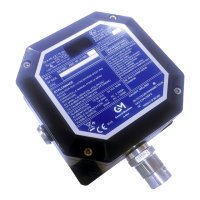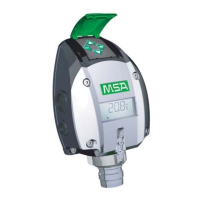The information and technical data disclosed in this
document may be used and disseminated only for
the purposes and to the extent specifically
authorized in General Monitors in writing. Such
information and technical data are proprietary to
General Monitors and may not be used or
disseminated except as provided in the foregoing
sentence.
Instruction Manual 01/18
General Monitors reserves the right to change published
specifications and designs without prior notice.
Part No. MANS4100C-EU
Revision Q/01-18



